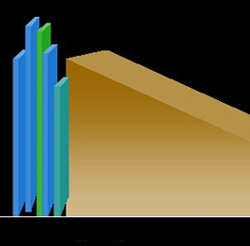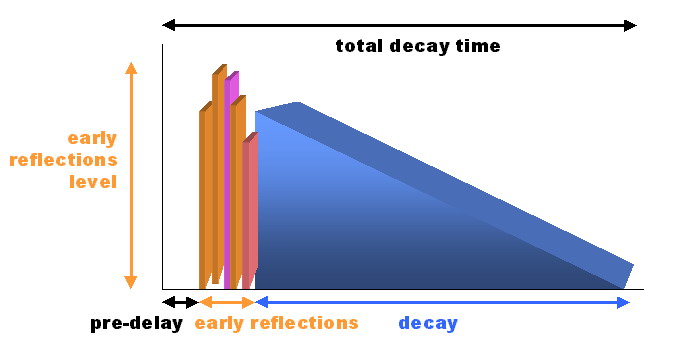
When we hear sounds in the “real world,” they are in an acoustic space.
For example, suppose you are playing acoustic guitar in your living room.
You hear not only the guitar’s sound, but because the guitar generates sound waves, they bounce off walls, the ceiling, and the floor.
Some of these sound waves return to your ears, which due to their travel through the air, will be somewhat delayed compared to the direct sound of the guitar.
This resulting sound from all these reflections is extremely complex and called reverberation.
As the sound waves bounce off objects, they lose energy and their level and tone changes. If a sound wave hits a pillow or curtain, it will be absorbed more than if it hits a hard surface.
High frequencies tend to be absorbed more easily than lower frequencies, so the longer a sound wave travels around, the “duller” its sound. This is called damping.
As another example, a concert hall filled with people will sound different than if the hall is empty, because the people (and their clothing) will absorb sound.
Reverberation is important because it gives a sense of space.
For live recordings, there are often two or more mics set up to pick up the room sound, which can be mixed in with the instrument sounds.
In recording studios, some have “live” rooms that allow lots of reflections, while others have “dead” rooms which have been acoustically treated to reduce reflections to a minimum – or “live/dead” rooms which may have sound absorbing materials at one end, and hard surfaces at the other.
Drummers often prefer to record in large, live rooms so there are lots of natural reflections; vocalists frequently record in dead rooms, like vocal booths, then add artificial reverb during mixdown to create a sense of acoustic space.
Whether generated naturally or artificially, reverb has become an essential part of today’s recordings.
















